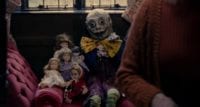Bram Stoker’s classic novel Dracula (1897) invites the reader into the world of Victorian England. The story follows English solicitor Jonathan Harker on his travels to Transylvania on business to meet with the now-infamous vampire, Count Dracula. Through the years, there have been many interpretations of the book’s themes and images. There’s no doubt that Dracula contains religious and sexual themes. Needless to say, to a 21st-century mind, the character’s attitudes are sexist and ethnocentric. However, the events unfold in a way that contradicts these beliefs.
The story is told through the characters’ journal entries, letters, and newspaper articles. Harker has an appointment to close a real estate deal with Count Dracula, who has just purchased a house in England. The behavior of the Romanian peasants is strange to Harker. They warn him away from Dracula’s castle and specifically not to travel on one particular night. He shrugs it off as superstition when they tell him that demonic forces are at work on that night.
Harker describes Romania as “wild and unknown,” and adds that Transylvania is dubbed “The Land Beyond the Forest,” which further implies mystery. When a woman gives Jonathan Harker a crucifix for his protection, he writes in his journal that he had been raised to look at objects such as crucifixes as idolatrous.
Harker represents the modern, industrial, science-based west, and Romania is the mysterious, mystical, east. He’s expressing an agnostic perspective in the face of the devoutly religious. Jonathan’s modern, science-based western views are contradicted by his experience at Dracula’s castle. He later admits feeling comfort in having the crucifix after he realizes that the peasants were right—Dracula is not of this world. Harker encounters Dracula’s vampire brides, who surround him as he sleeps and talk about “kissing” him. Dracula violently interrupts them and orders them out of the room. He notices that Dracula doesn’t appear during the day, he casts no reflection in the mirror, and he sleeps in a box of earth. Eventually, Harker realizes that he’s a prisoner. Dracula leaves for England with 50 boxes of Earth, leaving Harker trapped in the castle.
Harker writes, “Bless that good, good woman who hung the crucifix round my neck! For it is a comfort and a strength to me whenever I touch it. It is odd that a thing which I have been taught to regard with disfavour and as idolatrous should in a time of loneliness and trouble be of help. Is it that there is something in the essence of the thing itself, or that it is a medium, a tangible help, and conveying memories of sympathy and comfort?” [1]
Meanwhile, we are introduced to Harker’s fiancée Mina, her friend Lucy Westenra, Dr. John Seward and his favorite patient Renfield, Dr. Abraham Van Helsing, Arthur Holmwood, and Quincey P. Morris. Dr. Seward, Holmwood, and Morris all have an amicable rivalry for Lucy’s affection. All three men have proposed marriage to Lucy—she accepts Holmwood’s proposal. While Jonathan is in Transylvania, Mina stays with Lucy at Whitby, an English seaside resort town. Several strange things happen while Mina and Lucy are in Whitby. A violent storm brings the Demeter, a ship with a dead crew and a strange cargo consisting of 50 boxes of earth aboard, to Whitby Harbor. Lucy begins sleepwalking, and her health declines. Mina is called away when she learns that Jonathan, who managed to escape from Dracula’s castle, is recovering from “brain fever” at a convent in Romania. She goes to Romania to take care of Jonathan, and the two are married there.
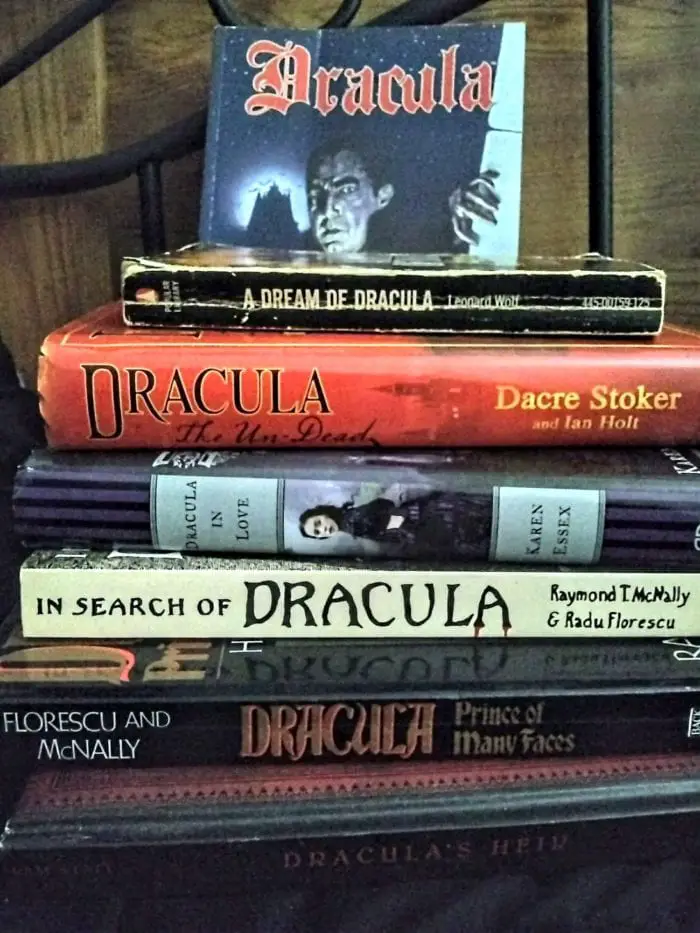
Dr. Seward contacts his mentor, Dr. Abraham Van Helsing, to look into Lucy’s mysterious illness. Although he doesn’t say anything at first, Van Helsing is convinced that Lucy’s failing health is a result of a vampire attack. His suspicion is apparent when he prescribes garlic as a treatment. Van Helsing also places a cross near Lucy, which puzzles Dr. Seward at the time. Despite having four blood transfusions, Lucy dies. It’s after Lucy’s death that he manages to convince Seward, Holmwood, and Morris of the existence of vampires by having them wait and meet up with vampire Lucy outside of her tomb. Lucy is staked by Arthur Holmwood and beheaded by Van Helsing.
After Lucy’s death, Van Helsing reads through her papers and finds out about her correspondence with Mina. Mina recently returned from Romania with Jonathan and is unaware of Lucy’s death. Van Helsing writes a brief letter to Mina informing her about Lucy’s death. When Van Helsing meets with Mina, she mentions Jonathan’s illness. This leads him to find out about Jonathan’s experiences in Transylvania. Van Helsing identifies Dracula as a vampire and convinces Holmwood, Seward, Morris, and the Harkers to track down and destroy Dracula. After Dracula attacks Mina and forces her to drink his blood, they are all willing to sacrifice their lives to save her by killing Dracula in an effort to lift his “curse.”
Dr. Seward also is intrigued by his patient, Renfield, who talks about the value of blood and life. Renfield traps flies with sugar, feeds them to spiders, and even eats them himself sometimes. Renfield’s ravings wax and wane with the coming of sunrise and sunset. When Renfield escapes Dr. Seward’s asylum, he heads to Carfax Abbey, which was recently purchased by Dracula. Eventually, Dr. Seward makes the connection between Renfield and Dracula. In some films, Renfield was Harker’s predecessor. In Stoker’s novel, Renfield has no prior connection to Dracula.
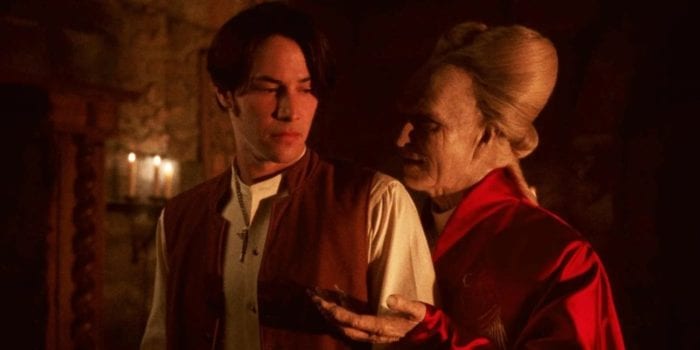
The vampire has a strong connection to the subconscious mind in Stoker’s vampire lore. The character Dracula represents everything repressed in Victorian society. Vampires are both frightening and alluring at the same time. They also attack when the victim is asleep or on the edge of sleep in a state of altered consciousness. The vampire’s nature is also sexual, associated with lust and promiscuity. Dracula has not one but three brides who boldly molest Jonathan Harker when he falls asleep in one of the rooms.
Jonathan describes his encounter with the brides: “I was afraid to raise my eyelids, but looked out and saw perfectly under the lashes. The girl went on her knees, and bent over me, simply gloating. There was a deliberate voluptuousness which was both thrilling and repulsive, and as she arched her back she actually licked her lips like an animal, till I could see in the moonlight the moisture shining on the scarlet lips and on the red tongue as it lapped the white sharp teeth. Lower and lower went her head as the lips went below the range of my mouth and chin and seemed about to fasten on my throat. Then she paused, and I could hear the churning sound of her tongue as it licked her teeth and lips, and could feel the hot breath on my neck…I closed my eyes in a languorous ecstasy and waited—waited with beating heart.” [2]
Jonathan is drawn to, yet repulsed by, the three women. In the end, in his “languorous” or tired, listless state, somewhere between consciousness and unconsciousness, he almost submits before Dracula interrupts.
Dracula unapologetically violates everything held sacred. His brides approach Jonathan as he is half asleep. Dracula attacks in dreams half-remembered by Lucy, and later, Mina. Lucy begins to sleepwalk after Dracula arrives in Whitby. He enters the women’s minds and violates or “corrupts” their flesh. Once Dracula’s blood is literally in their veins, Dracula’s victims become bold and unapologetically sexual like the “brides” at Dracula’s castle who leer at Jonathan Harker. They become “monsters,” who are killed with a stake through the heart. As a vampire, Lucy is described as no longer herself. A horrified Dr. Seward describes vampire Lucy’s features: “The sweetness was turned to adamantine, heartless cruelty, and the purity to voluptuous wantonness.” [3]
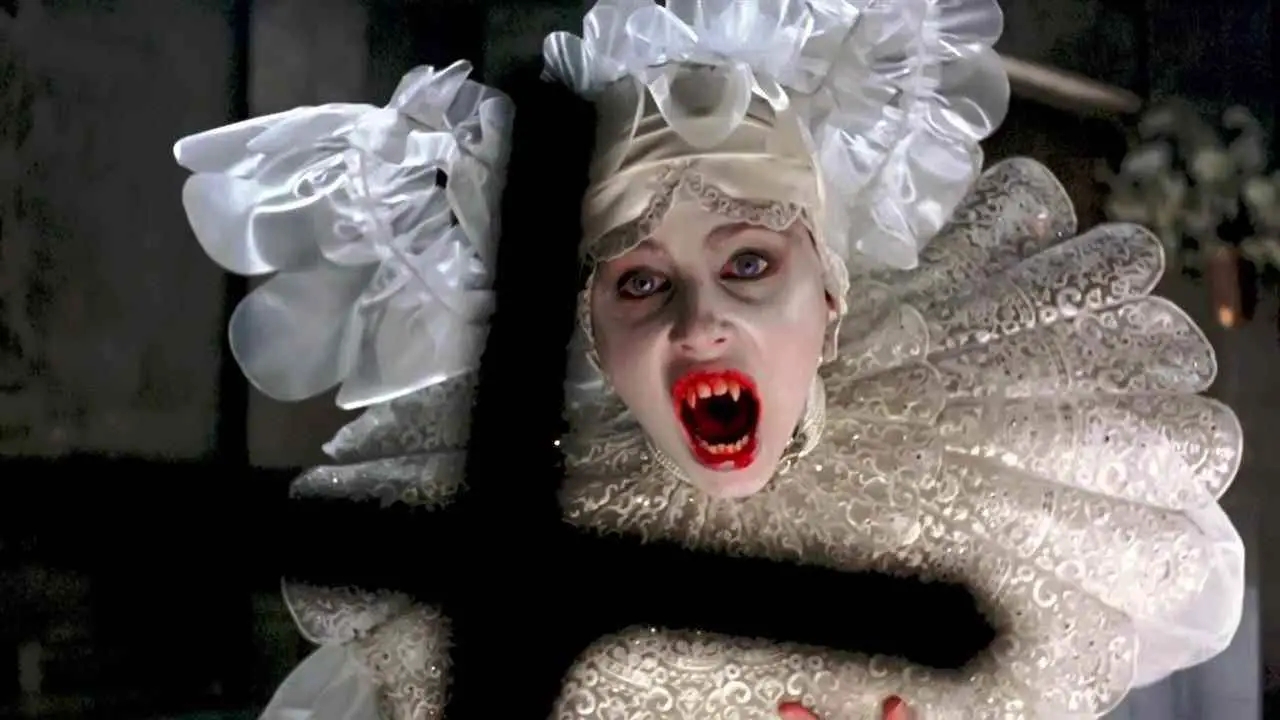
In the novel, Dr. Seward describes Lucy’s staking in his diary: “Arthur took the stake and hammer …Arthur placed the point over the heart, and as I looked I could see its dint in the white flesh. Then he struck with all his might.
“The Thing in the coffin writhed; and a hideous, blood-curdling screech came from the opened red lips. The body shook and quivered and twisted in wild contortions; the sharp white teeth champed together till the lips were cut and the mouth was smeared with a crimson foam. But Arthur never faltered. He looked like a figure of Thor as his untrembling arm rose and fell, driving deeper and deeper the mercy-bearing stake, whilst the blood from the pierced heart welled and spurted up around it. His face was set, and high duty seemed to shine through it; the sign of it gave us courage so that our voices seem to ring through the vault.” [4]
In Stoker’s world, vampires are beings controlled by blood lust. Lust is repressed in Victorian society and, therefore, part of the subconscious or unconscious mind. Dracula is the embodiment of all that is unthinkable to the Victorian mind—a monster who needs to be destroyed.
The stake in Dracula is often interpreted as a phallic symbol. Van Helsing urges Arthur Holmwood, aka Lord Godalming, to stake Lucy because he was her fiancée. The staking occurs on what would’ve been Arthur and Lucy’s wedding night. The scene depicts Arthur as the dutiful husband striking with the righteous hand of a god (Stoker specifically references Thor) to “save” his overtly sexual wife who boldly encourages him to come into her arms.
Clive Leatherdale, in his book, Dracula: The Novel and the Legend (1985), offers the following analysis, “Lucy’s nocturnal existence comes to a gory end in another of Stoker’s passages saturated with sexual meaning. On that day, had she lived, she was to have married Godalming. Now she taunts him. ‘Come, my husband, come!’ And the following night Godalming is given the task of setting his wife’s soul free by driving a (phallic) stake through her.” [5]
Leatherdale also refers to how Lucy’s blood transfusions can be interpreted sexually. Van Helsing administers four blood transfusions to save Lucy: one from each of her former suitors and fiancée plus Van Helsing himself. Earlier in the book, Lucy fantasizes about marrying all three of her suitors. It’s interpreted that her wish is fulfilled by receiving their blood. Leatherdale writes, “Pursuing the theme of Lucy’s sexual liberation, the sequence of blood transfusions can be taken as symbolizing successive acts of sexual intercourse, as she attains the freedom she dreamt of in life (‘Why can’t a girl marry three men?’). On her deathbed, her wish comes true, and she takes a series of ‘lovers.’ Holmwood, due to marry Lucy but foiled by her death, is the first to give her his blood/semen. In his later grief, he interprets the mingling of his blood with hers as a symbol of marriage in God’s eyes. Their relationship, in other words, has been consummated before her death. Holmwood knows nothing about the later transfusions, and his friends agree to silence regarding that contribution to save him pain and jealousy.” [6]
In Stoker’s world, vampires are beings controlled by blood lust. Lust is repressed in Victorian society and, therefore, part of the subconscious or unconscious mind. Dracula is the embodiment of all that is unthinkable to the Victorian mind—a monster who needs to be destroyed. From her writings, Lucy comes across as a dreamer and romantic mind. She’s also a sleepwalker. These qualities can indicate that she’s more in touch with her subconscious/sexual side. Her desire to marry three men suggests a desire to be promiscuous—unthinkable wickedness in the mind of a proper Victorian. Is it Lucy’s natural inclination toward lust, which is central to a vampire’s nature, that makes her more susceptible to becoming a vampire? Mina is more analytical, logical, more in touch with consciousness, and conforms with the status quo—she’s the dutiful and helpful wife. Therefore it’s her natural inclination to fight Dracula.

The only male who is susceptible to Dracula’s influence is Renfield who is mentally ill and under supervision at Dr. Seward’s asylum. The word “lunatic” is used to describe Renfield throughout the novel. Wikipedia’s basic definition of lunatic is that it was a term used for a mentally ill person because it was once thought that the phases of the moon or “lunar energy” influenced behavior. To this day, people still warn us when there’s a full moon or refer to it when strange things happen. Mental illness within this context can be interpreted as an altered or perhaps even hyper state of consciousness, which makes Renfield more sensitive to Dracula’s supernatural abilities. Stoker suggests that, in this hypersensitive state, Renfield is easy for Dracula to manipulate and a possible pawn to use in his game.
Stoker’s treatment of Mina contradicts the sexist attitudes of the male characters. Dr. Van Helsing leads the band of young male heroes on his crusade to rid the world of the vampire menace Count Dracula, but the strongest and most capable character is Mina. She proves her intelligence and competence to the group from the beginning. Van Helsing observes that she is rare in that she has a “man’s brain” and a “woman’s heart.” At the time, it was accepted that men were level-headed, mentally tough, and analytical while women were assumed to be more emotional, nurturing, and intuitive. Van Helsing expresses that Mina is a rare combination of both. However, because she is a woman, and the group decides to leave her out—even after she proves her competence. Even though she points out key details that prove valuable, the men agree that the situation is too much for a woman to bear. Mina reluctantly agrees. It’s only when they let her back into the group that she leads them to Dracula.
Leonard Wolf, the editor of The Essential Dracula (1993), notes that “[Stoker’s] treatment of women in Dracula is a tangle of contradictions. For most of the fiction, he allows male characters to speak the usual Victorian cliches about women and their role, and yet, a careful reader must notice that whatever admiring prose is devoted to Van Helsing and his chivalric band, the men, in a crunch, make one catastrophic mistake after another and are, finally, saved by the wisdom and courage of Mina Harker.” [7]
Wolf also notes that Stoker’s mother, Charlotte, was outspoken in favor of equal rights for women. Wolf also makes the following observation: “Since Dracula is something of a monument to the conscious and unconscious feelings Stoker had about women, it may not be necessary to come down on one side or the other in assessing them. It may be that his conscious attitude was affected by the fact that Bernard Shaw was pro-feminist and there was much antipathy between Shaw and Henry Irving, whom Stoker idolized.” [8]
Mina organizes everyone’s diaries to provide a thorough overview of their situation. When she first meets Dr. Seward, he’s reluctant to include his diary with her and Jonathan’s. Seward thinks that it would be a violation of his privacy, but he has no issues with reading Mina and Jonathan’s diaries. Mina tells Dr. Seward that his diary also will be needed to give a complete overview of the situation. She tells him that the experiences recorded in his diary may contain important details that could enhance their knowledge of Dracula. Mina points out that the more information that they have, the better equipped they’ll be in dealing with the situation. Dr. Seward reluctantly agrees and admits she was right. There are many instances in the story where propriety, protocol, and prudence will prohibit the group’s progress. Adhering to the societal protocol may even endanger their lives.
Anytime that the men in the story assert that there are certain things that women are not capable of, Mina’s actions prove those assumptions wrong.
When the men decide to exclude Mina, she’s left alone. The men unwittingly create the perfect opportunity for Dracula to attack Mina and “infect” her with his blood. They regret their decision and allow her once again to take part. Once Dracula realizes that Van Helsing and his group are aggressively pursuing him, he flees England. Dracula ships himself back to Transylvania in his one remaining box of earth that the group didn’t get to “purify” with holy water and sacred host. Van Helsing, Seward, Morris, and Holmwood plan to pursue Dracula to Transylvania because killing him is the only way to save Mina. Mina is seen as a possible threat after Dracula “infects” her by forcing her to drink his blood.
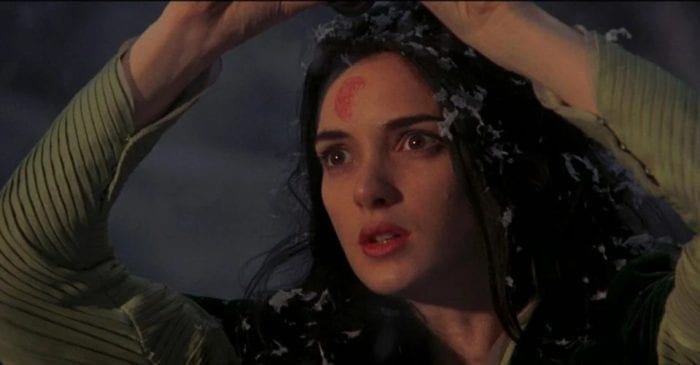
According to Stoker’s vampire lore, the infusion of Dracula’s blood creates a psychic bond and gives him the ability to control Mina. He could pick Mina’s mind to find out what the group is up to. The group decides that Mina and Jonathan should be excluded from the trip—Jonathan because he may, as her husband, confide the group’s plans to Mina. Mina confronts Dr. Van Helsing and tells him that she and Jonathan must go with them. She points out that her connection to Dracula could be useful and that Van Helsing can hypnotize her so she can access this connection. Van Helsing agrees. As the remainder of the events unfolds, Mina is proven right.
Jonathan records the conversation in his journal. Mina tells Van Helsing, “You men are brave and strong. You are strong in your number, for you can defy that which would break down the human endurance the one who had to guard alone. Besides, I may be of service, since you can hypnotize me and so learn that which I myself do not know.” Dr. Van Helsing said very gravely,–
“Madam Mina, you are, as always, most wise. You shall with us come, and together we shall do that which we go forth to achieve.” [9]
Anytime that the men assert that there are certain things that women are not capable of, Mina’s actions prove those assumptions wrong. They trace Dracula’s box back to Transylvania. The group loses track of the box which was being shipped by sea. When Van Helsing hypnotizes Mina, she can see and hear Dracula’s surroundings. This is another example of Dracula’s connection to the subconscious mind. Hypnotism opens a door for Mina, allowing her to access Dracula. Usually, she describes only darkness and the lapping of water against the ship as he’s traveling by sea. However, Mina notes that the sound of the water is different. Even though she feels Dracula’s “pull” or influence on her, she decides to sit down with her journal. Mina organizes her thoughts and impressions. She uses her natural intelligence plus supernatural connection to Dracula to figure out that Dracula is traveling on a river and no longer by sea. It’s her thinking that leads them to Dracula. Without her, they never would’ve found him.
Mina eventually becomes stigmatized after being “baptized” by Dracula. Mina wins Van Helsing over by being a prudent, pure, and “proper” married woman. Seward, Holmwood, and Morris also feel an instant connection to Mina and become protective of her. They are all outraged and infuriated when Dracula violates her. Afterward, as with Lucy, her features are described as changing. When Van Helsing places the sacred host on her, it burns her skin and leaves a mark. This mark serves as a visual reminder that Mina was violated. Throughout the rest of the novel, the men occasionally refer to the burn mark and say that they’re disturbed or disgusted by it. Even though the men feel sympathy, they all still—including Mina herself—deem her “unclean.” In Stoker’s novel, there is no romance between Mina and Dracula. Dracula uses her as a pawn in his game and as revenge against Jonathan. Mina demonstrates that she realizes Dracula’s intent. Mina doesn’t act like a hypnotized slave, but Van Helsing and Seward are still reluctant to trust her. Even though she didn’t willingly accept her “blood baptism” by Dracula, she’s considered corrupted.
The religious theme in Dracula is also contradictory. Abraham Van Helsing is not only a physician but also a doctor of philosophy. He’s also a true believer in Christianity. Van Helsing is a fusion of both science and mysticism. He wields crucifixes and the sacred host like talismans. He applies the sacred items of the Catholic church in a ritualistic or shamanistic way—according to the church, a blasphemous way. For example, to seal Lucy’s tomb, he crumbles the sacred host into putty to place in the doorway. According to Catholicism, the sacred host symbolizes the body of Jesus Christ.

Leonard Wolf consulted a Catholic priest, Father William Quinn, about the use of the sacred host in the novel. At the time, Fr. Quinn was part of the Canon Law Office of the Archdiocese of San Francisco. Quinn said that Van Helsing’s use of the sacred host is “…absolutely impermissible since, in Catholic belief, the sanctified wafer is the Body of Christ Himself. The Host, therefore, may not be used in any profane way, no matter how exalted the end in view.” [10]
Wolf also includes a quote from writer Lawrence Watt-Evans on Stoker’s contradictions “Part of Dracula’s power comes from how Dracula’s foes are forced to fight evil on its own terms, and win only by abandoning proper Victorian roles and accepting the need for violence, blasphemy, and irrationality to defeat the vampire. Vampires are beings of blood and hunger and lust, dark and irrational. Using sacred symbols to restrain the creature while you drive a stake through its heart […] this is not how proper Englishmen behave.” [11]
As an elderly man, Van Helsing also symbolizes experience and wisdom. I got the impression that Van Helsing’s experiences in life brought him to fuse both spirituality and science. He’s the undisputed leader as he “opens their eyes” to the existence of vampires and guides the younger characters on their quest. As a vampire, Dracula is also an embodiment of both the physical and metaphysical. Dracula’s power over life and death elevates him over humans which he fully embraces as empowering. He suffers no guilt for what he is, and he is arrogant. The human he was, a warrior prince who saved his people, enlarges this ego even more. Dracula assumes no human can outsmart him. When he realizes that the group is pursuing him aggressively, he leaves England to go back to Transylvania. Van Helsing often refers to Dracula’s “child brain” as a vampire. In life, Van Helsing explains Dracula was a very powerful man, but he’s a novice as far as dealing with his vampiric nature and will make mistakes.
Bram Stoker’s Dracula took the figure of the vampire and explored it with a story that captures the imagination with its intense themes of religion and sexuality. It also gives a peek into the Victorian mind—an idea of how people viewed their world. As the story unfolds, the worldview of its cast of characters is challenged. Was it Stoker’s goal to challenge the Victorian mind to put aside its mode of thinking? Was he having fun shocking them and terrifying them with the embodiment of their worst nightmare? Was he trying to warn us not to allow scientific knowledge to make us blind to what’s happening in front of us—not to assume that we know all there is to know and doubt other possibilities? The events unfold as a stark contradiction to established Victorian norms and beliefs. Whatever his intent, Stoker succeeded in creating a rich and engaging narrative that gives the feeling of viewing the world through 19th-century eyes like a trip back in time.
Works Cited
[1] Stoker, Bram, Wolf, Leonard (Ed.), The Essential Dracula (New York: Penguin Books, 1993), p. 38.
[2] Stoker and Wolf, p.52
[3] Stoker and Wolf, p. 256
[4]Stoker and Wolf, p. 262
[5] Leatherdale, Clive, Dracula: The Novel & The Legend: A Study of Bram Stoker’s Gothic Masterpiece (Wellingborough, Northamptonshire: Aquarium Press, 1985), p. 151
[6] Leatherdale, p. 150-1
[7] Stoker and Wolf, p. 120
[8] Stoker and Wolf, p. 120
[9] Stoker and Wolf, p. 386
[10] Stoker and Wolf, p. 255
[11] Stoker and Wolf, p. 426



